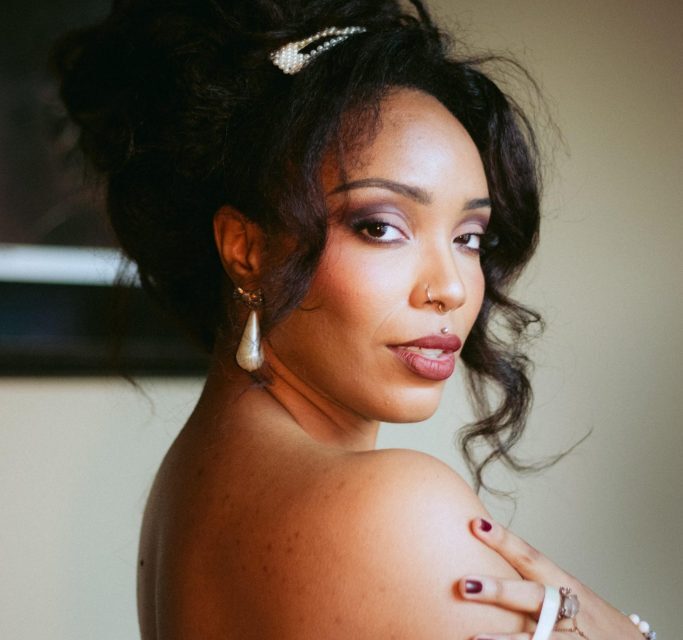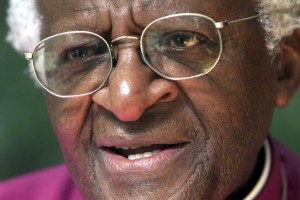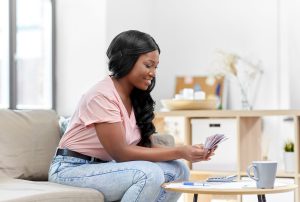By Helen Bezuneh,
Special to the AFRO
Black deaf and hard of hearing individuals have utilized TikTok to amplify their unique experiences, not only enlightening viewers about the distinct challenges and perspectives that set them apart from their non-Black counterparts in the deaf and hard-of-hearing community, but also forging meaningful connections. These TikTokers have fostered a sense of unity among Black individuals who are deaf or hard of hearing, demonstrating to others that they are not alone.
“I want other people who are deaf and Black and also have been mainstreamed to be able to see that we’re out here,” 30-year-old deaf TikToker, singer, freelance artist and model Anjuli Symone told the AFRO. “We’re not all a monolith in our experience. We can do anything that we want to do. Just because there may be expectations, whether that’s put on us by us or society or family, doesn’t mean that we can’t or can do everything.”

Symone makes TikTok videos showcasing her singing, which she has been able to do since she was young by feeling sound vibrations. Her content has caught the attention of viewers, who are stunned by her voice.
Though Symone was born with about 75 percent hearing loss, it took doctors a while to determine that she had hearing issues. With Symone’s mother worried that she was not responding to much noise, she took her to get checked for hearing loss. However, the doctors said that Symone’s lack of responsiveness was more likely due to her not liking her mother, not due to deafness.
Symone was indeed deaf, despite doctors’ assumptions –– assumptions that, Symone said, could have been racially informed.
“Would they have told a White parent that?” said Symone, who is from Little Rock, Ark. “I don’t know that they would have.”
It’s well known that Black individuals face disparate medical treatment compared to their White counterparts, and this inequity persists within the Black deaf and hard-of- hearing community.
“Racial biases can influence the diagnosis and treatment of Black deaf, deaf-blind, deaf-disabled, hard-of- hearing and late-deafened folks resulting in delayed or inappropriate diagnosis,” Howard A. Rosenblum, CEO of the National Association of the Deaf (NAD), told the AFRO.
Similar to many organizations, the NAD has a history marked by racism. Historically, the association did not permit Black folks to become members, and it was not until 1965 that African Americans were allowed entry.
“It is documented in the 1904 minutes that the NAD delegates stated Black deaf students should have their own school,” said Rosenblum. “Fast forward to 2012, NAD delegates passed a resolution acknowledging the NAD’s discriminatory actions towards the Black deaf communities. The NAD gave a formal apology at the Black Deaf Advocates (NBDA) Conference in 2013 and the National Black Deaf Senior Citizens of America Conference in 2022.
“It was wrong then and it is still wrong today,” Rosenblum continued. “It was wrong to ban Black deaf people from being able to join as members and vote during the NAD’s business meetings. This is our history and we acknowledge our past racial injustices. We also recognize that the NAD’s support at that time for segregation was wrong and apologize for this harmful act. The NAD remains committed to changing racist practices, including important perspectives on the board and team and working with all communities.”
The historical segregation of the NAD speaks to the historically persistent, distinct struggles confronted by Black individuals who are deaf or hard-of-hearing. This can contribute to a sense of isolation from both Black and deaf communities. Symone, in particular, grapples with these intersectional struggles–– as a child, she felt extremely isolated due to her reality living as a Black deaf person in a predominantly White area.
“When youre the one who has to wear a scarf at the slumber party, or when you’re the one who also has to wear hearing aids, it’s a very isolating existence,” said Symone. “Because these are things that your parents are constantly screaming at you – ‘I need you to wear your bonnet, I need you to wear your hearing aids’ – and you’re just sitting there like, ‘But Karen isn’t. I don’t want to be different.’”
As an adult, Symone faces unrealistic expectations from those who may not understand her unique circumstances as a Black deaf person.
“People expect me to know sign,” said Symone, who never had the chance to learn American Sign Language. “They expect me to have a certain cadence in the way that I speak because I’m also Black on top of that. But I speak ‘properly’. Me being deaf and me being Black together played a lot into the reason why I don’t know sign.
“We were in an all-White area and we were the only Black family,” she continued. “Because we weren’t wealthy, we didn’t have the resources to put me in a special school. I just want people to understand that all of these identities intertwine and play a part into this.”
ASL is not the only sign language that some deaf and hard-of-hearing Americans use. Many Black deaf and hard-of-hearing folks on TikTok have worked to educate their viewers about Black American Sign Language, a dialect of ASL used most commonly by deaf African Americans in the U.S.
“BASL is a very treasured language,” Nakia Smith, a fifth generation deaf TikToker from Dallas, Texas, told the AFRO. “I think it’s unbelievable for [people], when it comes to any Black that creates something amazing. It’s nice to have our own things. So when I teach viewers about BASL, I know there will be a lot of questions, and it’s normal.”
Smith has made various TikTok videos that teach viewers how to sign BASL, including phrases such as “don’t give me attitude,” “that’s tight,” “attitude for what?” and more.
BASL historically emerged due to segregated deaf schools throughout the 1800s. With the first Black deaf school opening in 1869, some 52 years after the opening of the first school for the deaf in the U.S., Black deaf schools developed a sign language rooted in early ASL, while White deaf schools moved towards a focus on lip-reading and speaking.
Today, BASL typically involves two-handed gestures, while modern ASL predominantly relies on one hand. BASL is recognized for its emphasis on facial expressions and extensive use of physical space when signing.
However, not every Black deaf person knows BASL, and it’s important to not assume that they do.
“Sign languages are valued in our deaf communities,” said Rosenblum. “For years, people have referred to American Sign Language as the only sign language in the U.S. but this is not true and is quite misleading. There are other sign languages that deaf, deaf-blind, deaf-disabled, hard-of-hearing and late-deafened people use such as BASL, ProTactile and more. This is why the NAD celebrates International Day of Sign Languages hosted by the World Federation of the Deaf (WFD).”
With common whitewashed perceptions of deaf communities, Symone frequently faces assumptions that she is not deaf.
“Now that I’m older I actually get dismissed a lot as a deaf person,” she said. “You can’t deny that I’m Black, but I think it’s easy for people to forget that I’m deaf. So when I go into a medical office or something and I am speaking, I constantly have to remind them, ‘Excuse me, I’m deaf.’”
“A lot of times it gets dismissed because I speak so well, but I also think when you’re the only Black family, you’re told you have to be better than everyone, you have to speak well,” she continued. “I also think that ultimately if it’s easy for people to dismiss it, if it’s easier for them to get you to assimilate to them, then they’re going to keep pushing for that.”
Social media has heightened the visibility of the distinct experiences of Black deaf and hard-of-hearing individuals, playing a crucial role in fostering connections within the Black deaf community.
“The default I think is to just accept loneliness, at least it was for me because that was all I knew,” said Symone. “But I think if you want to find community, it’s out there. You just have to be willing to put yourself out there. Social media is a double edged sword. It can be a really negative and scary place, but it can also be a positive space. I can’t say I made a whole community, but I have found some community in that and I’ve been able to create some really good connections.”
The post TikTok provides forum for Black deaf to be heard appeared first on AFRO American Newspapers.











